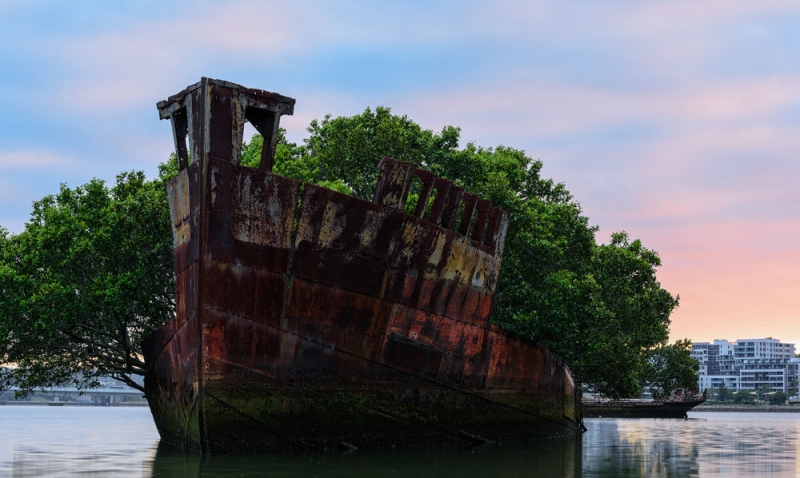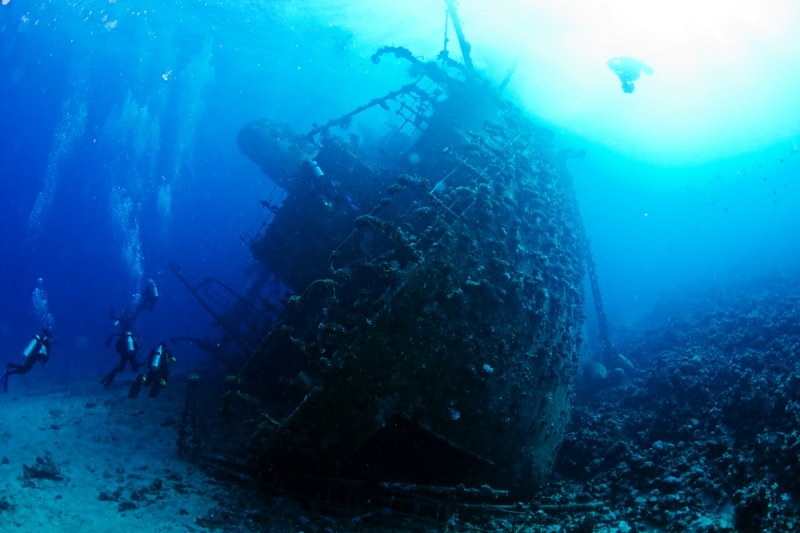
A ship is almost a separate small country in which everything functions smoothly and autonomously. Large and beautiful, plowing the seas and oceans, they inspire admiration, but what happens after they serve their purpose? Well, most modern metal ships are dismantled and melted down, but some continue their “afterlife” in the most unexpected places . Today we will talk about them.
Underwater

According to the UN, thousands of ships rest at the bottom of the seas and oceans around the world. Some sank during the war, others for other reasons, including wear and tear or neglect, and some may have been sunk by actual pirates. One way or another, if a sunken ship is not raised from the bottom, then it soon fits into the local ecosystem, especially if it happens on the shallows in warm tropical waters, where fish, shells and corals take over the space faster than rust. Such places become real monuments to life itself, to how easily nature captures abandoned creations of human hands and picturesquely decorates them with its colors. It’s no wonder that shipwrecks at shallow depths attract divers – there is a special magic in swimming through a hole overgrown with algae in some yacht on which they once played music and drank champagne.
The Red Sea in Egypt turned out to be the richest in sunken ships; at shallow depths there is a passenger steamer overgrown with bright corals, and further into the sea lie a Soviet spy ship, around which various radio equipment is scattered, and a huge Japanese cargo ship Giannis D with partially preserved equipment and interior. In Hawaii, in Pearl Harbor, several ships were preserved as war monuments. Of course, you won’t be able to dive at a military base, but you can visit the memorial built over the battleship Aurora. There is also a very picturesque diving spot in Bali in the Tulamben area. A small damaged cargo ship lay on the shore for a long time, but one of the earthquakes moved it towards the ocean, now it is covered by a layer of water from 7 to 30 meters, as well as a bright reef with numerous fish and turtles.
In the desert
No less vivid, but very depressing and sad emotions are evoked by the ship cemetery in the Aralkum desert, located on the territory of Uzbekistan and Kazakhstan. Half a century ago, the city of Muynak on the shores of the Aral Sea was a port with a developed fishing and canning industry. In the 1960s, the waters of the Amu Darya River flowing into the sea were partially diverted to irrigate cotton, and the Aral Sea began to disappear before our eyes: in forty years, the water surface area was reduced by more than half, and the once bustling port turned into a ghost town. Now huge rusty ships stand in a row, surrounded by endless desert sands, children play on them, animals hide from the scorching sun in their shade. The few remaining residents of the city of Muynak are trying to survive by attracting tourists, fortunately, there are enough people willing to watch and photograph such a surreal picture.
Between heaven and earth
Homebush Bay in Sydney is another haven for decommissioned ships. Until the 1980s, the bay was an industrial area where old, rusty ships were dismantled and toxic waste was processed. Then, in order to stop spoiling the city’s ecology, the enterprises were closed, and the useless ships that remained afloat were abandoned in the bay for an indefinite period. One of them has become a local landmark – it is over a hundred years old, the hull has fallen apart in some places, and real mangroves have grown on board! At sunset, in soft purple tones, this floating forest seems to float above the surface of the bay, as if it was painted by Hayao Miyazaki himself.

